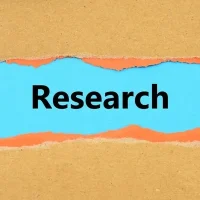Deadline: 13-Mar-23
The Administration for Children and Families has launched the applications for Building Early Childhood-Child Welfare Partnerships to Support the Well-Being of Young Children, Families, and Caregivers.
The purpose of this NOFO is to fund eight grant recipients for 3-year projects to support the development and/or enhancement of strategic multi-system and multi-level collaboration between child welfare, ECE, and other relevant partners. Such efforts will support infrastructureand capacity-building to deliver complementary, coordinated, and holistic services to young children and their families and caregivers.
Goals
Grant recipients will focus on meeting the following project goals:
- Develop and/or enhance strategic coordination and communication among child welfare, ECE, families and caregivers with young children, and other relevant partners.
- Support the development and institutionalization of policies and/or procedures within a jurisdiction to increase the identification, enrollment, and attendance of infants and young children, with or at-risk, of child welfare involvement into comprehensive, high-quality ECE services.
- Build infrastructure capacity to ensure the provision of comprehensive and holistic services to young children and their families with or at-risk of child welfare system involvement.
- Create, implement, and/or strengthen joint efforts to advance racial equity within the child welfare, ECE, and partner systems to ensure that historically underserved and marginalized populations of color have access to high-quality ECE services that build on their strengths and are responsive to their individualized needs.
- Conduct a program evaluation to determine the extent to which funded efforts have contributed to improved coordination and communication; strengthened networks; and increased referrals, enrollments, and engagement in quality ECE programs, particularly for historically underserved populations.
- Disseminate information and knowledge gained from project findings and support efforts to allow for programs and policymakers to broadly integrate project knowledge into policy and practice within the child welfare, ECE, and other relevant fields.
Funding Information
- Estimated Total Funding: $2,200,000
- Expected Number of Awards: 8
- Award Ceiling: $275,000 Per Budget Period
- Award Floor: $250,000 Per Budget Period
- Average Projected Award Amount: $275,000 Per Budget Period
- Length of Project Periods: 36-month project period with three 12-month budget periods
Target Population
The target population for this project includes the range of young children ages 0-5 and their families and caregivers across the child welfare continuum (from prevention to permanency), including children that are at-risk of being reported to child welfare systems, have been reported to child welfare systems, are receiving in-home prevention services, are in foster care or kinship care, are receiving post-adoption services, or any combination thereof. Grant recipients must involve parents with lived experience in the child welfare system purposefully and meaningfully in project planning and implementation, and ensure that their funded approach includes strategies to advance equity for people of color and others who have been historically marginalized and overrepresented in the child welfare system.
Eligibility Criteria
- County governments
- Native American tribal organizations (other than Federally recognized tribal governments)
- Nonprofits that do not have a 501(c)(3) status with the IRS, other than institutions of higher education
- Independent school districts
- Private institutions of higher education
- Public and State controlled institutions of higher education
- Public housing authorities/Indian housing authorities
- State governments
- Native American tribal governments (Federally recognized)
- City or township governments
- Nonprofits having a 501(c)(3) status with the IRS, other than institutions of higher education
- Small businesses
- Special district governments
- For profit organizations other than Small businesses
For more information, visit Grants.gov.








































